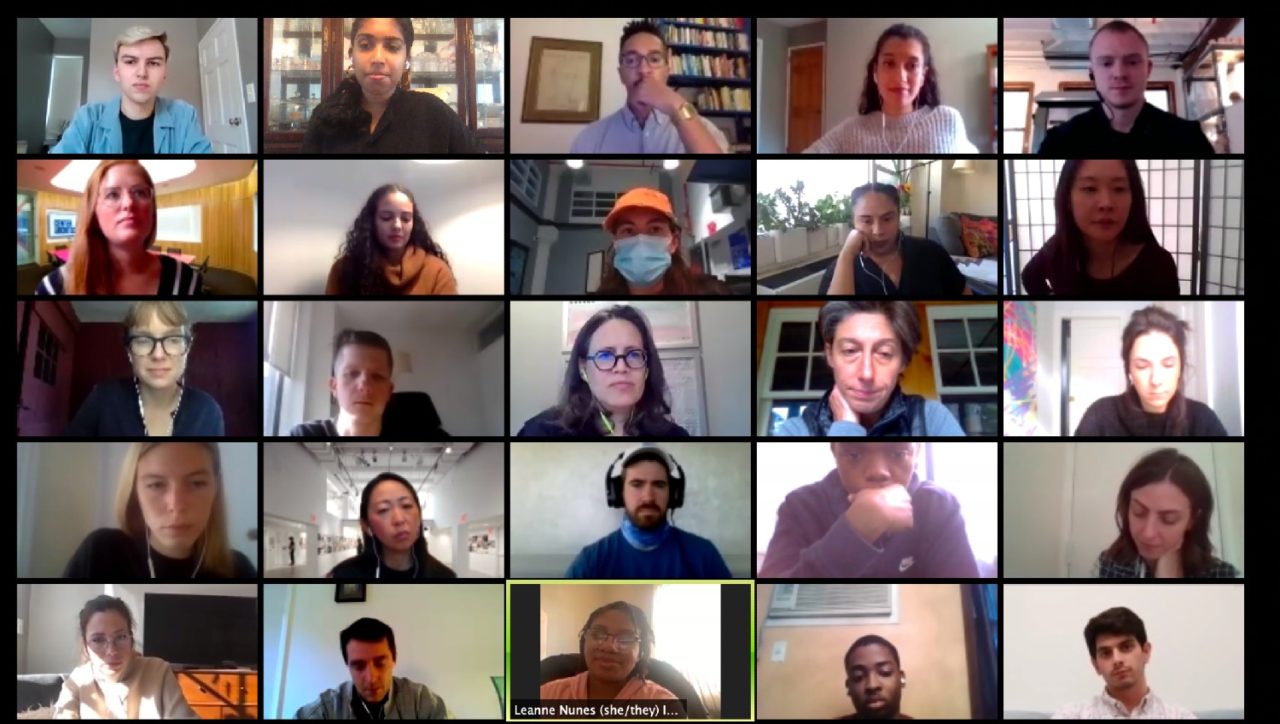by: Corey Arena, Assoc. AIA, and Betsy Daniel, AIA
“Part of why I think it’s so important to engage with school buildings, is that this is the first civic space, and possibly the only civic space, that a lot of children in this city will interact with, so what the quality and design of that building says to them as their role in the city as a citizen, I think, is so important.” —Sarah Grant, AIA, Murphy Burnham & Buttrick
On February 3, 1964, a decade after Brown v. Board of Education, an estimated 464,361 students and teachers participated in the New York City school boycott over inequality in the education system. This boycott became the largest civil rights demonstration of the 1960s, nearly twice as large as the March on Washington. Over half a century later, New York City faces many of the same issues with segregation in the educational system. According to a 2019 UCLA study, school integration peaked in 1988 and has been on a steady decline ever since. New York remains the most segregated state for Black students.
On Friday, October 2, CLP fellows Corey Arena, Assoc. AIA, and Betsy Daniel, AIA, conducted the fifth and final development session for the 2020 AIANY Civic Leadership Program (CLP). The session’s title, “School Integration and Its Spatialization,” pointed to an important facet of racial inequality in the United States—that segregation is a spatial act.
The day’s session began with an introduction by Arena and Daniel on the history of school segregation and actions taken to foster integration. This was followed by panels focusing on advocacy for school integration, the environmental impacts of school systems, and the lived experiences of the students who attend and teachers who teach in New York City public schools. A final panel looked at the District 15 Diversity Plan as a case study on creating real integration.
Nyah Berg, Integrated Schools Project Director at NY Appleseed, and Matt Gonzales, Director of the Integration and Innovation Initiative at NYU Metro Center, presented their work advocating for equitable education and school integration. Next, environmental psychologist Evie Klein, Assoc. AIA, Co-Founder of the User Design Information Group at CUNY, explored how a classroom space can impact the students, particularly students of color. Finally, Sara Grant, AIA, Partner at Murphy Burnham & Buttrick, outlined the process of designing public schools in NYC and how policies promoting integration do, or do not, become materialized in new school construction today.
Following this panel, students, teachers, and former students shared their unique experiences with public education in New York City. Leanne Nunes, the Executive College Director at Integrate NYC, an organization that centers student voices that Nunes joined her freshman year of high school after witnessing the criminalization of high school students, reviewed the “5 Rs of Real Integration”:
- Race and enrollment
- Resource distribution
- Relationship building
- Restorative justice
- Representation of faculty
The development session’s guests and the CLP class then discussed the diverse educational experiences of all participants. Joining the conversation were Josh Cruz, teacher at Brooklyn STEAM Center, and Wilky Pierre-Louis and Kymani Richmond, high school students at Brooklyn STEAM Center, a high school located in the Brooklyn Navy Yard that teaches technical skills. Breakout session questions included:
- What barriers existed in getting into NYC schools and into your own school?
- If you went to NYC schools, describe your school environment. If not, what kinds of school environments have you observed?
- Did your faculty reflect the student population?
The second half of the workshop featured a panel that looked at the District 15 Diversity Plan as a case study on materializing school integration through a multi-year process. Sadye L. Campoamor, Director of Community Affairs for the NYC Department of Education, and Andy McClintock, Senior Director of Equity Planning and Implementation for the NYC Department of Education, co-led a broad-ranging and insightful discussion.
The CLP cohort was then joined by Chris Rice, Associate at WXY, who spoke about his firm’s role in the District 15 Diversity Plan, which included organizing multi-language, in-person community meetings, negotiating a multi-organization working group, and providing extensive data visualization and mapping.
Concluding the workshop, Arena and Daniel emphasized that architects must understand schools as a bedrock to larger civic life and society, meaning that integration is not an option; it is desperately necessary for a just and equitable society for all.
Special thanks to: Nate Broughton, AIA, and Frances Fox, AIA, Co-Chairs of the AIANY Architecture for Education Committee; Zarith Pineda, Founder at Territorial Empathy; and Becky Yurek, AIA, Senior Design Liaison, NYC Department of Design and Construction.








